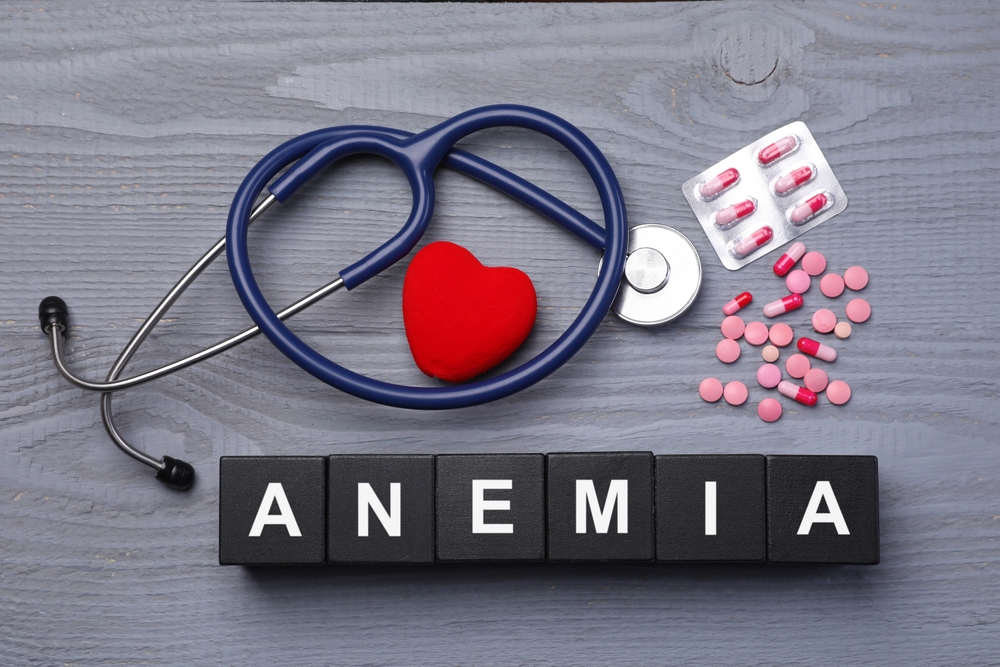What You Should Know About Anaemia and how to Deal with It
by Carolyn Lee Sep 5, 2022

Anaemia is sometimes dismissed as a less than serious health condition. However, it can be challenging for someone with untreated anaemia to function successfully. If you’ve heard a friend or someone close to you mention that they are anaemic, you may wonder what’s happening to them. We are breaking down this potentially dangerous health condition, its causes, the different types, and how to deal with it.
What should you know about anaemia?
Anaemia is a common blood condition defined by low haemoglobin (red blood cells). Haemoglobin is the main protein in blood cells and carries and delivers oxygen throughout the body. There are many forms of anaemia, and each has its cause. Anaemia can range from mild to severe and can be temporary or long-term. Anaemic people may experience fatigue, shortness of breath, and other symptoms because their organs are not getting what they need to work efficiently.
Does anaemia have identifiable signs or symptoms?
Some anaemia symptoms depend on the type, severity, and underlying cause (ulcers, cancer, haemorrhaging, or menstrual problems). Someone with mild anaemia or who develops it over time may not notice any symptoms or signs until after a while. Symptoms specific to most types of anaemia include dizziness, shortness of breath, fatigue, rapid heartbeat, and pale, easily bruised, or dry skin. A sore tongue, headaches, and weakness are also common in people with anaemia.
What are the causes and types of anaemia?
You can develop anaemia if your body destroys or doesn’t make enough red blood cells. Some people acquire anaemia due to a condition present at birth or bleeding that causes them to lose red blood cells before the body can replace them. Some types of anaemia include iron deficiency, sickle cell anaemia, vitamin deficiency, aplastic, and anaemia of inflammation.
Iron deficiency anaemia: This condition happens when insufficient iron is in the body. Your bone marrow relies on iron to make haemoglogin. Without enough iron, your body can’t produce the red blood cells needed to provide your organs with the oxygen required for optimal functioning. This type of anaemia is typical in most pregnant women. Some causes of iron deficiency anaemia include blood loss (menstrual bleeding), cancer of the large intestine, ulcer in the stomach, a diet that lacks enough iron, and regular or overuse of painkillers (aspirin). A doctor can assist in determining the source of an iron deficiency to prevent anaemia from recurring.
Sickle cell anaemia: This haemolytic anaemia is inherited and can be severe. Sickle cell anaemia results when red blood cells break down so quickly that the oxygen doesn’t reach your organs. The shape of the red blood cells is crescent or sickle-shaped and can clog the blood vessels, causing damage. Since these irregular blood cells die prematurely, it can result in a chronic shortage of red blood cells in the body.
Vitamin deficiency anaemia: Vitamin B-12 and folate are crucial for making healthy red blood cells. If your diet is lacking in these and other essential nutrients, it can result in a decrease in red blood cell production. Also, although some people have enough vitamin B-12, their bodies cannot absorb it. When your body does not absorb vitamin B-12, it leads to vitamin deficiency anaemia (pernicious anaemia).
Aplastic anaemia: Certain medicines, infections, exposure to toxic chemicals, and autoimmune diseases can cause aplastic anaemia. This rare and life-threatening form of anaemia indicates insufficient or the absence of stem cells. This condition can be genetic or result from injury to your bone marrow from radiation, chemotherapy, infections, or medications. Leukaemia or multiple myeloma commonly affects the bone marrow and may cause aplastic anaemia.
Anaemia of inflammation: Autoimmune diseases (HIV/AIDS), rheumatoid arthritis, cancer, kidney disease, or other acute or chronic inflammatory diseases can interfere with the production of red blood cells, leading to anaemia of inflammation. This condition is also classified as anaemia of chronic illness because it typically occurs in people with chronic conditions associated with inflammation.

Can anaemia be prevented?
Eating a diet that includes a variety of vitamins and minerals, like iron, vitamin B-12, vitamin C, and folate, can help prevent iron deficiency anaemia and vitamin deficiency anaemias. Some types of inherited anaemia cannot be prevented but can be managed.
Who is at risk for anaemia and why is it important to get diagnosed?
Anyone can develop anaemia, however, women, infants, children (ages one and two), people over 65 years old and people taking blood thinners have an increased risk. If untreated, anaemia can cause heart problems (arrhythmia), extreme fatigue, pregnancy complications, and death (sickle cell anaemia, heart failure, etc.).
How is anaemia diagnosed?
Your doctor can diagnose anaemia after reviewing the results of blood and other tests (urine, stool, etc.). Your blood test can indicate how much iron your body has stored or if you are low in vitamins B-12 and B9. The type and number of tests depend on what type of anaemia your doctor thinks you might have. Your doctor will use the results to determine the correct type of treatment needed.
If you think you may be experiencing some of the symptoms associated with anaemia, make an appointment with your doctor. You should also make an appointment if you try to donate blood and are told that you can’t donate because of low haemoglobin.
At Yello, we make it easy for you to find the products and services you need. So, use our Find Yello search bar to locate doctors, health centres, and related services.
Sources: Mayo Clinic, WebMD, Cleveland Clinic, and Medical News Today.








